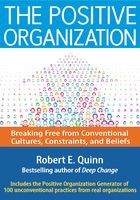
The Reality of Constraint
Most organizations tend to be like the more conventional Hospital 2, where many of the nursing units were disempowering places. A few empowering exceptions are found, like Unit 5, but it is not the norm.
Recall that we found Unit 5 because we went searching for a unit of excellence, a positive exception in the organization. We wanted to challenge the tightly held assumptions of the nursing directors by exposing them to a positive reality within their system. We hoped to jolt their beliefs and open their minds to the possibility of thinking in a new and more empowered way.
What we learned is this: the directors, like many people in positions of authority, do not aspire to have flourishing people in their units. They instead seek to meet the minimum assumed requirement in order to survive. Survival, not flourishing, is the aspiration of conventional managers. They do not look for or expect to find excellence. When they do find excellence, they tend to ignore it rather than examine and learn from it. Everyone knew about the excellence of Unit 5, but it never occurred to anyone that it was possible to use that success as a lever for creating a more positive culture in other such units. The conventional focus on constraint precluded a focus on possibility.
Across the world, supervisors, managers, and executives learn to speak in politically correct ways about improvement. Yet, it is quite common for them to operate from a perspective of problem solving and task accomplishment. Perhaps it is natural, and even rewarded, for many of them to slough off any sense of responsibility for creating positive organizations.
This book invites each one of us to become aware of the assumptions that form our individual mental maps (what we believe), how those maps guide our responses to what we observe and experience (our behavior), and how our responses create and reinforce the cultures we live in. It invites each of us to begin to become leaders who imagine and pursue the construction of positive organizations even amid the reality of constraints.